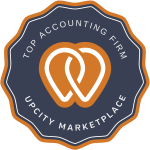1. Forecast Your Cash Flow Regularly
Cash flow forecasting is one of the most important tools in your financial management toolkit. By regularly forecasting your cash flow, you can anticipate periods of surplus or shortage and make informed decisions to ensure your business remains financially stable. This process involves analyzing historical data, considering upcoming expenses, and
projecting future cash inflows and outflows.
For example, if you anticipate a slow season, your forecast will allow you to plan ahead, either by cutting non-essential costs or arranging short-term financing to cover the gap. Updating your cash flow forecast at least monthly ensures you stay prepared for any financial challenges.
2. Manage Receivables, Payables, and Optimize Working Capital Efficiently
Efficient management of receivables (money owed to you) and payables (money you owe) is key to maintaining a healthy cash flow. Late payments from customers can lead to cash shortages, so it’s important to invoice clients promptly and follow up on overdue payments. You may want to offer incentives for early payments to encourage timely receipts.
On the payables side, negotiating extended payment terms with suppliers without incurring late fees allows you to retain cash longer, giving you more flexibility. Additionally, by optimizing your working capital, you can better manage the balance between assets (like cash and accounts receivable) and liabilities (like accounts payable). Consider reducing excess inventory, tightening credit terms with customers to accelerate cash inflows, and extending payment terms with suppliers to delay cash outflows.
These strategies help free up cash for critical uses, like business expansion or handling unexpected expenses.
3. Monitor and Control Costs
Regularly monitoring and controlling costs is essential for maintaining a positive cash flow. Begin by reviewing all of your business expenses to identify areas where you can reduce costs without affecting the quality of your products or services. This might involve renegotiating contracts with suppliers, finding more cost-effective service providers, or cutting back on non-essential spending.
Even small savings can accumulate over time and have a significant impact on your cash flow. By keeping your costs in check, you ensure that more of your revenue is retained within the business, strengthening your financial position.
4. Build a Cash Reserve
A
cash reserve acts as a financial safety net for your business, allowing you to cover unexpected expenses or weather periods of reduced income. To build a cash reserve, aim to set aside a portion of your profits on a regular basis. This reserve can provide crucial support during lean times, helping you avoid taking on unnecessary debt or making hasty financial decisions.
A strong cash reserve not only enhances your business’s financial stability but also gives you peace of mind knowing that you have a buffer to fall back on when needed.
Conclusion
Effective cash flow management is key to the success and longevity of your small business. By implementing these strategies strategies—forecasting cash flow, managing receivables and payables, optimizing working capital, controlling costs, and building a cash reserve—you can maintain a healthy cash flow, ensure operational continuity, and position your business for growth.
Ready to take control of your cash flow? Contact Vertices today to learn more about how our accounting services can help you manage your finances and achieve your business goals.





